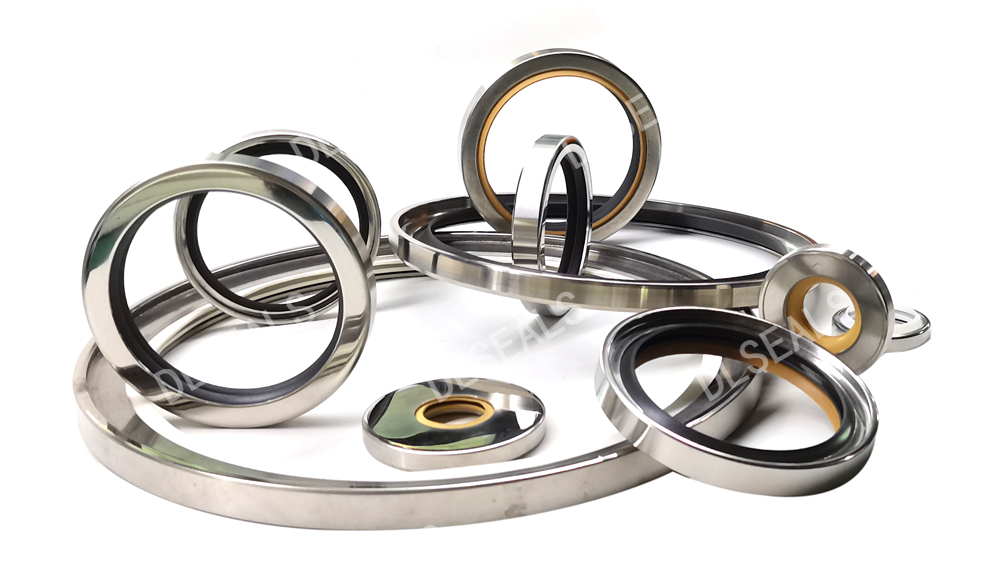
Stainless steel oil seal is a commonly used mechanical sealing element. It can effectively prevent oil leakage and avoid the intrusion of external pollutants. It is widely used in various industrial and engineering equipment. When selecting and installing stainless steel oil seals, many factors need to be considered to ensure that it can meet the use requirements of the equipment and has good sealing performance and service life.
1. Selection of stainless steel oil seals
When selecting stainless steel oil seals, the following key factors need to be considered:
Working environment:
Temperature: Stainless steel oil seals need to be able to maintain good performance at the expected working temperature.
Pressure: The pressure applied to the oil seal when the equipment is running needs to be considered.
Chemical medium: The properties of the working medium, such as corrosiveness, lubricity, etc., will affect the selection of oil seal materials.
Material selection:
Shell material: Usually stainless steel 304 or 316L is used, which has good corrosion resistance and mechanical strength.
Lip material: Commonly used rubber materials include nitrile rubber (NBR), fluororubber (FKM) and silicone rubber (SIR), etc., depending on the working conditions and sealing performance requirements.
Spring material: The spring is generally made of stainless steel to ensure corrosion resistance.
Size and tolerance:
Select the appropriate stainless steel oil seal according to the size of the equipment shaft and ensure that it meets the tolerance of the equipment operation.
Shape and design:
Select the appropriate oil seal model according to the specific requirements of the seal, such as inner diameter, axial length, etc.
Supplier and brand:
When choosing a stainless steel oil seal, consider the supplier’s reputation and the brand’s quality assurance.
2. Installation of stainless steel oil seals
Installing stainless steel oil seals is a key step to ensure their optimal performance. Correct installation can avoid leakage and ensure the long-term stability of the seal.
Preparation:
Ensure that the installation surface is clean and smooth, and remove any burrs, oil stains or impurities that may affect the sealing performance.
Check whether the oil seal meets the equipment requirements and whether there is any damage or defects.
Installation method:
Shaft installation:
If the stainless steel oil seal is installed on the shaft, the oil seal should be placed on the shaft first, and then the shaft should be slowly inserted into the oil seal flange.
Be careful to avoid excessive collision or crushing of the oil seal lip.
Slot installation:
For the installation of slotted oil seals, ensure that the size and shape of the slot match the oil seal and press it gently into the slot.
Ensure that the oil seal lip is not entered by foreign objects such as iron sheets to avoid affecting the sealing effect.
Inspection and adjustment:
After installing the oil seal, check whether it is correctly positioned and whether there is any leakage.
If necessary, the compression of the oil seal can be slightly adjusted, but be careful not to over-compress to avoid damaging the oil seal.
Lubrication and running-in:
In the early stage of equipment operation, there may be slight leakage. This is because the oil seal and the shaft need a period of running-in to achieve the best sealing effect.
Pay attention to check the state of the oil seal and add lubricant appropriately if necessary.
3. Maintenance and care
In order to ensure the effectiveness of stainless steel oil seals and extend their service life, maintenance and care cannot be ignored:
Regular inspection:
Regularly check the sealing performance of the oil seal, including whether there is leakage, wear or aging.
Cleaning and replacement:
Once the oil seal is found to be damaged or severely worn, it should be replaced in time, and the installation surface should be cleaned to keep the environment clean.
Lubrication management:
According to the equipment operating conditions and instruction manual, add appropriate lubricant regularly.
Correct use:
The equipment should be operated according to the manufacturer’s instructions and avoid overloading to reduce the wear of the oil seal.
4. Summary
When selecting stainless steel oil seals, it is necessary to carefully consider the working environment, equipment requirements and material selection. The correct installation method can ensure the sealing performance of the oil seal. At the same time, regular inspection and maintenance can effectively extend the service life of the oil seal and avoid mechanical equipment failure due to oil leakage. Reasonable selection and maintenance of stainless steel oil seals can reduce maintenance costs and improve equipment operation efficiency and reliability.
Post time: Aug-29-2024
